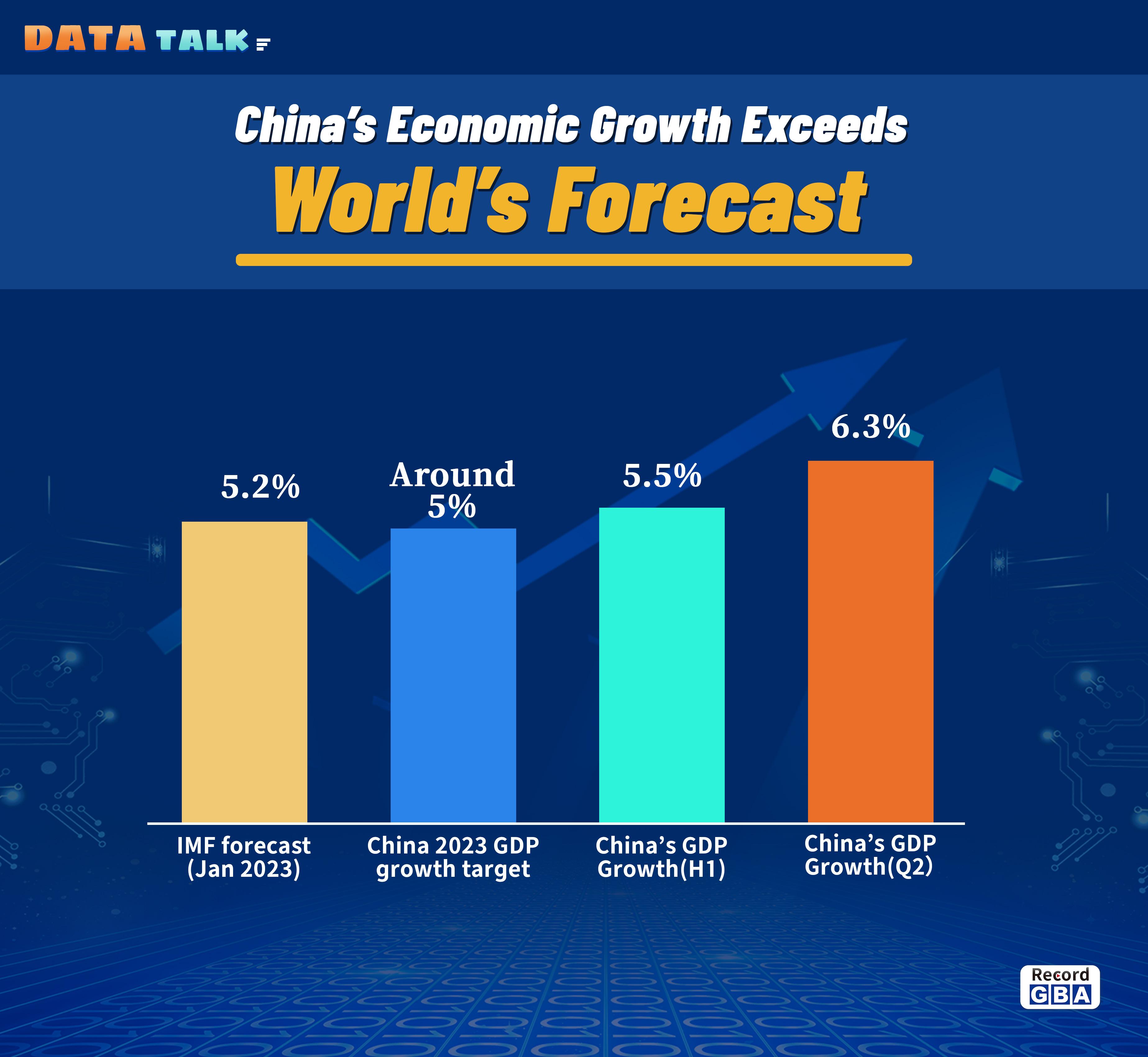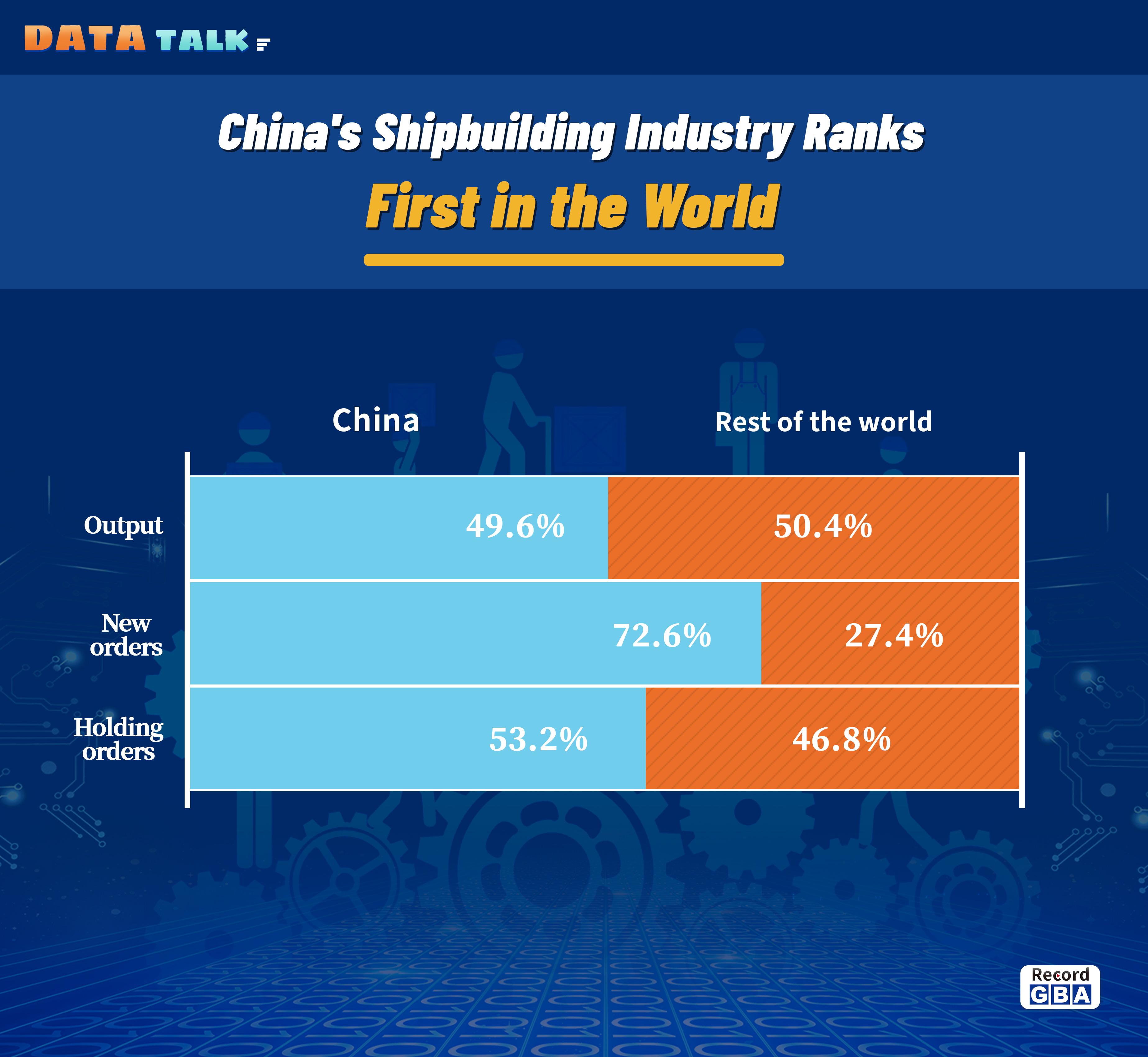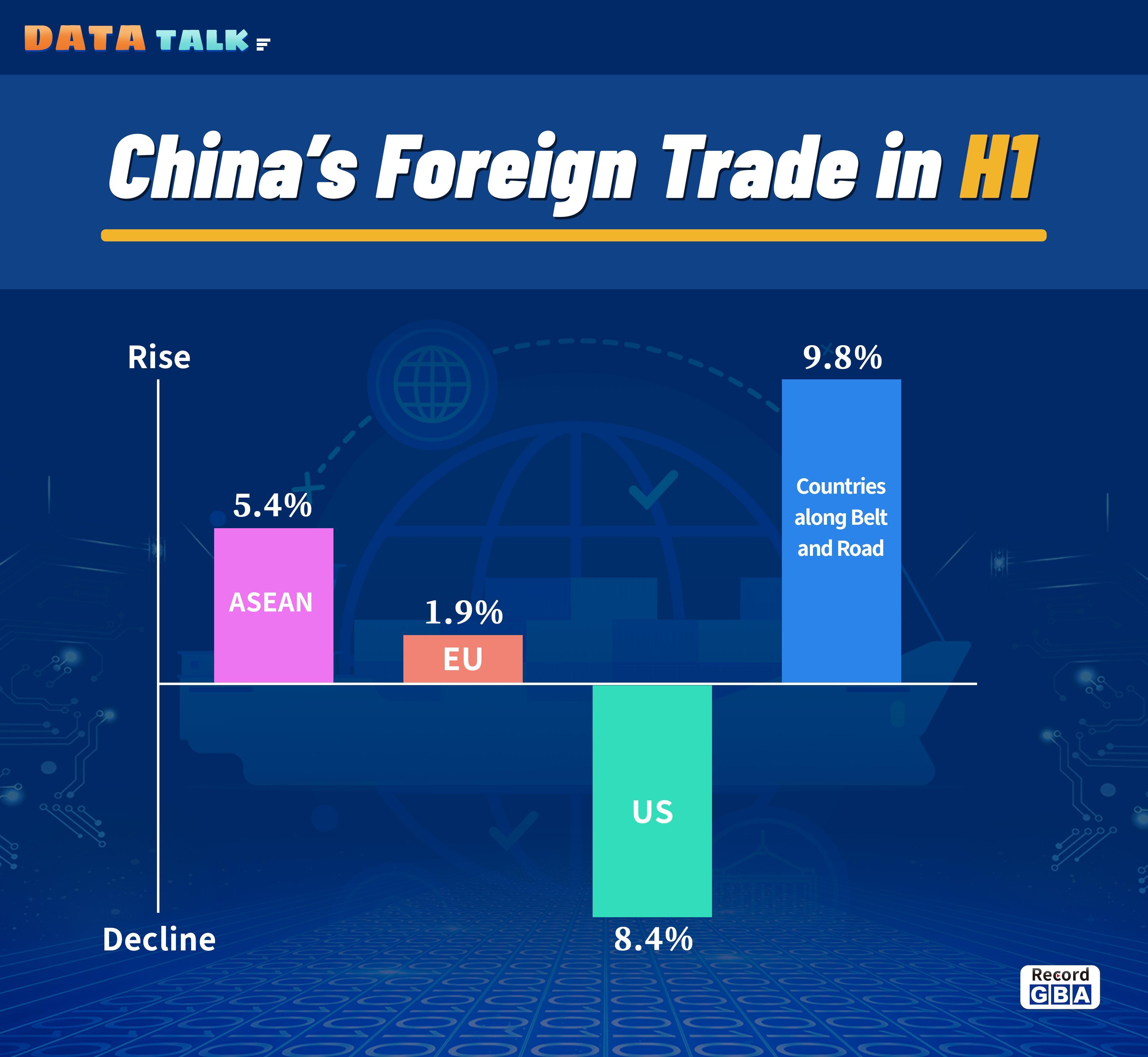



On July 17th, the report card for the national economy in the first half of the year has been released. The data shows that the country's gross domestic product (GDP) grew by 5.5% year-on-year in the first half, with a growth rate of 6.3% in the second quarter. What does this 5.5% growth rate mean on a global scale?



The data indicate that the 5.5% growth rate is significantly higher than the 3% economic growth rate recorded for the previous year, and it surpasses the average annual growth rate of 4.5% during the three years of the pandemic. It is a relatively high-quality growth rate.
Amidst the global economic slowdown this year, China has maintained relatively fast economic growth, providing crucial support to global economic development. Recently, major international organizations have raised their global economic growth expectations, which are significantly influenced by the recovery of the Chinese economy.
The 5.5% economic growth represents an improvement in structure and optimization of momentum. With regard to demand, economic growth has shifted from being primarily driven by investment and exports last year to being driven by consumption and investment this year. Notably, consumer spending has made a significant contribution to economic growth, accounting for over 70% in the first half of this year.
In terms of production, economic growth has shifted from being primarily driven by the industrial sector last year to a joint effort by the service industry and the industrial sector, with a substantial increase in the contribution of the service industry. In the first half of the year, the contribution of the service industry to economic growth exceeded 60%.
The 5.5% economic growth represents growth driven by innovation, transformation of development patterns, high-level opening-up, and optimization of trade structure. The data shows that in the first half of the year, investment in high-tech industries increased by 12.5% year-on-year, the value added of information transmission, software, and information technology services grew by 12.9%, and online retail sales of physical goods increased by 10.8%.
In the first half of the year, China's total import and export of goods increased by 2.1% year-on-year, with the proportion of general trade imports and exports, which have higher added value, rising to 65.5% of the total. This indicates a positive trend towards a diversified trade structure.
The 5.5% economic growth represents growth that expands employment and improves people's livelihoods. Since the beginning of this year, the overall surveyed urban unemployment rate in China has been declining, reaching 5.2% in June, which is close to the pre-pandemic level. The improvement in employment has led to an increase in residents' income. In the first half of the year, the disposable income per capita across the country grew by 5.8%, showing a significant acceleration compared to the previous year.
It is worth noting that the 5.5% economic growth also signifies consolidation in food and energy security. Among them, the total output of summer grain reached 146.13 million tons, the second-highest in history.
怎么看待上半年GDP5.5%的经济增速?一图解析
7月17日,国民经济上半年成绩单出炉。数据显示,上半年,国内生产总值同比增长5.5%,其中二季度增长6.3%。5.5%的增长在全球属于什么水平?
数据表明,5.5%的增长明显快于上年全年3%的经济增速,也快于疫情三年年均4.5%的增速,是含金量比较高的增速。
今年以来,全球经济增长低迷,中国经济保持较快增长,为全球经济发展提供了重要支撑。近期,主要国际组织上调了全球经济增长预期,很重要的因素就是中国经济恢复向好。
5.5%的经济增长是结构改善、动能优化的增长。从需求看,经济增长由去年的以投资和出口拉动为主,转为今年的以消费和投资拉动为主。其中,消费对经济增长贡献明显提升。今年上半年,最终消费支出对经济增长贡献率超过70%。
从生产来看,经济增长由去年以工业推动为主,转为服务业和工业共同推动,服务业的贡献大幅增加。上半年,服务业增长对经济增长贡献率超过60%。
5.5%的经济增长是创新驱动、发展方式转变的增长,也是高水平开放扩大、贸易结构优化的增长。数据显示,上半年,高技术产业投资同比增长12.5%,信息传输、软件和信息技术服务业增加值增长12.9%,实物商品网上零售额增长10.8%。
上半年,我国货物进出口总额同比增长2.1%,其中附加值较高的一般贸易进出口占进出口总额的比重上升到65.5%,贸易多元化发展向好。
5.5%的经济增长是就业扩大、民生改善的增长。今年以来,我国城镇调查失业率总体下降,6月份降至5.2%,已经接近疫情前同期的水平。就业扩大带来居民收入增加。上半年,全国居民人均可支配收入实际增长5.8%,比上年全年明显加快。
值得注意的是,5.5%的经济增长也是粮食、能源安全得到巩固的增长。其中,夏粮总产量14613万吨,产量居历史第二高位。
文丨羊城晚报全媒体记者 陈泽云
图丨付怡 黎杰文
翻译丨刘佳慧
责编丨古司祺
- Why is Dongguan the "Capital of China's Designer Toys"? 2023-07-19 14:17:34
- Chinese ink painting tells the history of Haizhu 2023-06-08 18:28:54
- Foshan, Shunde: Ronggui Dragon Boat Fest is coming! 2023-06-08 18:28:45
- Tan Ancestral Hall opens in Dongguan 2023-06-08 18:28:45